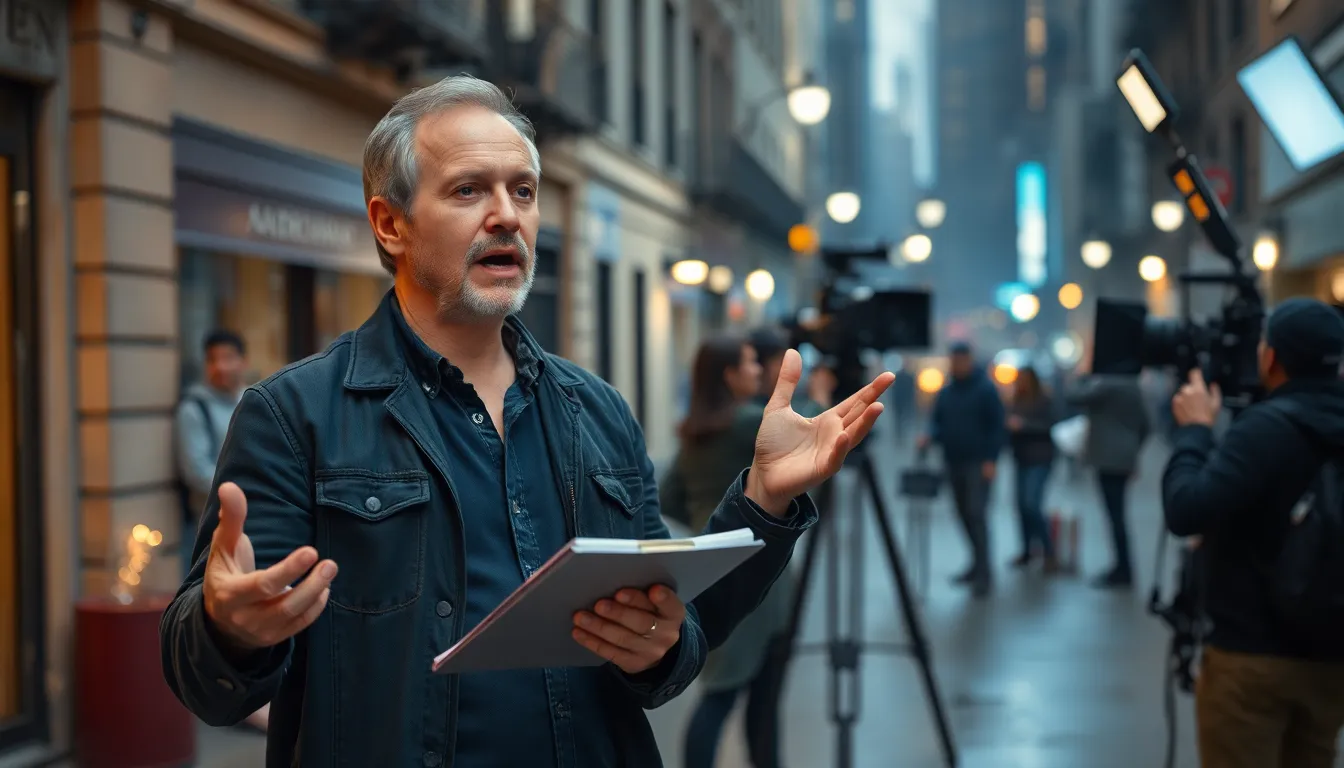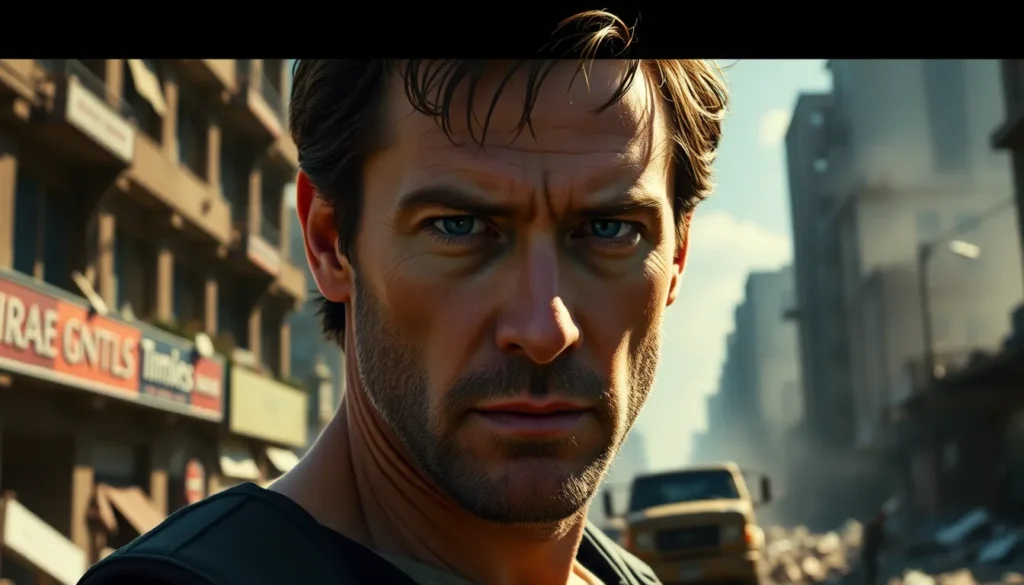Table of Contents
ToggleEvery great film has a secret sauce that keeps audiences glued to their seats. It’s not just the star-studded cast or the mind-blowing special effects; it’s the structure that weaves the story together. Understanding film structure is like knowing the rules of a game—once you get it, you can appreciate the genius behind your favorite flicks and even craft your own cinematic masterpieces.
Understanding Film Structure Explained
Film structure serves as the backbone of any captivating narrative. Grasping this framework significantly enhances one’s film appreciation and storytelling abilities.
The Importance of Structure in Film
Structure shapes how a story unfolds on screen. A well-defined structure keeps audiences engaged, guiding them through a cohesive journey. It aids in organizing scenes and sequences effectively. Successful films often follow recognizable patterns, such as the three-act structure, which presents setup, confrontation, and resolution. These elements create emotional arcs that resonate with viewers, pulling them into the characters’ experiences. Maintaining a clear structure allows filmmakers to balance pacing and tension, crucial for sustaining audience interest.
Key Components of Film Structure
Several key components compose a solid film structure. The exposition introduces the setting and characters, providing context for the narrative. Rising action builds toward the climax, heightening tension and conflict. The climax represents the turning point of the story, offering the greatest intensity. Falling action follows, leading to the resolution, where conflicts resolve and themes are revealed. These components function together, crafting a coherent and engaging experience. Dialogue, cinematography, and editing contribute to these structural elements, weaving visual storytelling alongside character development.
Three-Act Structure

The three-act structure serves as a foundational framework in storytelling, guiding the narrative through distinct phases that engage audiences. This structure encompasses Act One: Setup, Act Two: Confrontation, and Act Three: Resolution.
Act One: Setup
The first act introduces key characters and establishes the story’s world. It also presents the central conflict, drawing viewers into the narrative. Characters face challenges that foreshadow upcoming events. For instance, protagonists often reveal their desires and motivations. Strong setups effectively create an emotional connection between characters and the audience. They lay the groundwork for the unfolding drama.
Act Two: Confrontation
In the second act, conflict intensifies as characters encounter obstacles. Here, viewers witness the characters’ attempts to achieve their goals, leading to tension and suspense. Stakes rise significantly, and plot twists often occur during this phase. Antagonists may emerge, presenting challenges that test protagonists’ resolve. Character development flourishes as choices lead to unforeseen consequences. This act culminates in a pivotal moment that sets the stage for resolution.
Act Three: Resolution
The final act resolves the central conflict and ties up loose ends. Viewers discover how characters respond to the climax, often leading to significant growth or change. Key themes are reinforced, providing a sense of closure. This act often includes a denouement, summarizing the aftermath of the story’s primary events. Viewers gain insight into the characters’ futures and the narrative’s broader implications. A well-crafted resolution leaves a lasting impact, ensuring a cohesive narrative experience.
Alternative Structures
Film narratives often deviate from traditional formats, offering creative paths for storytelling. Unique structures create engagement and challenge audience perceptions.
Nonlinear Storytelling
Nonlinear storytelling rearranges events to disrupt chronological order. Flashbacks and flash-forwards frequently illustrate character experiences, enhancing emotional depth. Audiences often piece together narratives, creating active engagement in the film experience. Notable examples include “Pulp Fiction” and “Eternal Sunshine of the Spotless Mind,” where fragmented timelines contribute to thematic complexity. This structure invites viewers to explore different perspectives, fostering a deeper connection to characters as they navigate pivotal moments out of sequence.
Circular Narratives
Circular narratives intentionally lack a clear beginning, middle, or end. Instead, they loop back on themselves, creating a self-contained experience. This structure can produce a sense of inevitability, emphasizing themes of fate or personal growth. Films like “The Lion King” and “Memento” illustrate this format effectively, with stories that reflect upon their origins or reverse back to earlier events. By employing circular storytelling, filmmakers provoke reflection on the cyclical nature of life, inviting audiences to reconsider their understanding of the narrative journey.
Film Structure and Genre
Genre shapes film structure in significant ways. Different genres follow distinct conventions that influence how stories unfold. For instance, a romantic comedy typically employs a resolution with couples uniting, while a horror film might conclude with a shocking twist. Recognizing these genre conventions enhances both storytelling and audience engagement.
How Genre Influences Structure
Genre influences narrative patterns and character arcs. Each genre sets expectations for pacing, tone, and conflict. Audiences anticipate specific elements like action in thrillers or character development in dramas. Comedies often rely on structure that leads to humorous setups and punchlines. Understanding these patterns helps filmmakers craft stories that resonate with viewers.
Case Studies of Different Genres
Action films often showcase a clear three-act structure. In this genre, protagonists face escalating challenges, leading to high-stakes confrontations. Bollywood musicals integrate song and dance into their narratives, creating a unique rhythmic structure. Horror films, on the other hand, build tension gradually before delivering a climactic scare. By studying these diverse examples, one gains insight into how genre dictates effective storytelling techniques in film.
Understanding film structure is crucial for both appreciating and creating compelling stories. By grasping the foundational elements of narrative, filmmakers and audiences alike can engage more deeply with the art of cinema. The three-act structure provides a reliable framework that guides storytelling while alternative structures offer creative avenues for exploration.
Different genres further influence how stories unfold, shaping audience expectations and enhancing emotional connections. As filmmakers experiment with these elements, they invite viewers to experience narratives in innovative ways. Ultimately, a solid grasp of film structure not only enriches one’s viewing experience but also empowers aspiring creators to craft memorable cinematic journeys.







